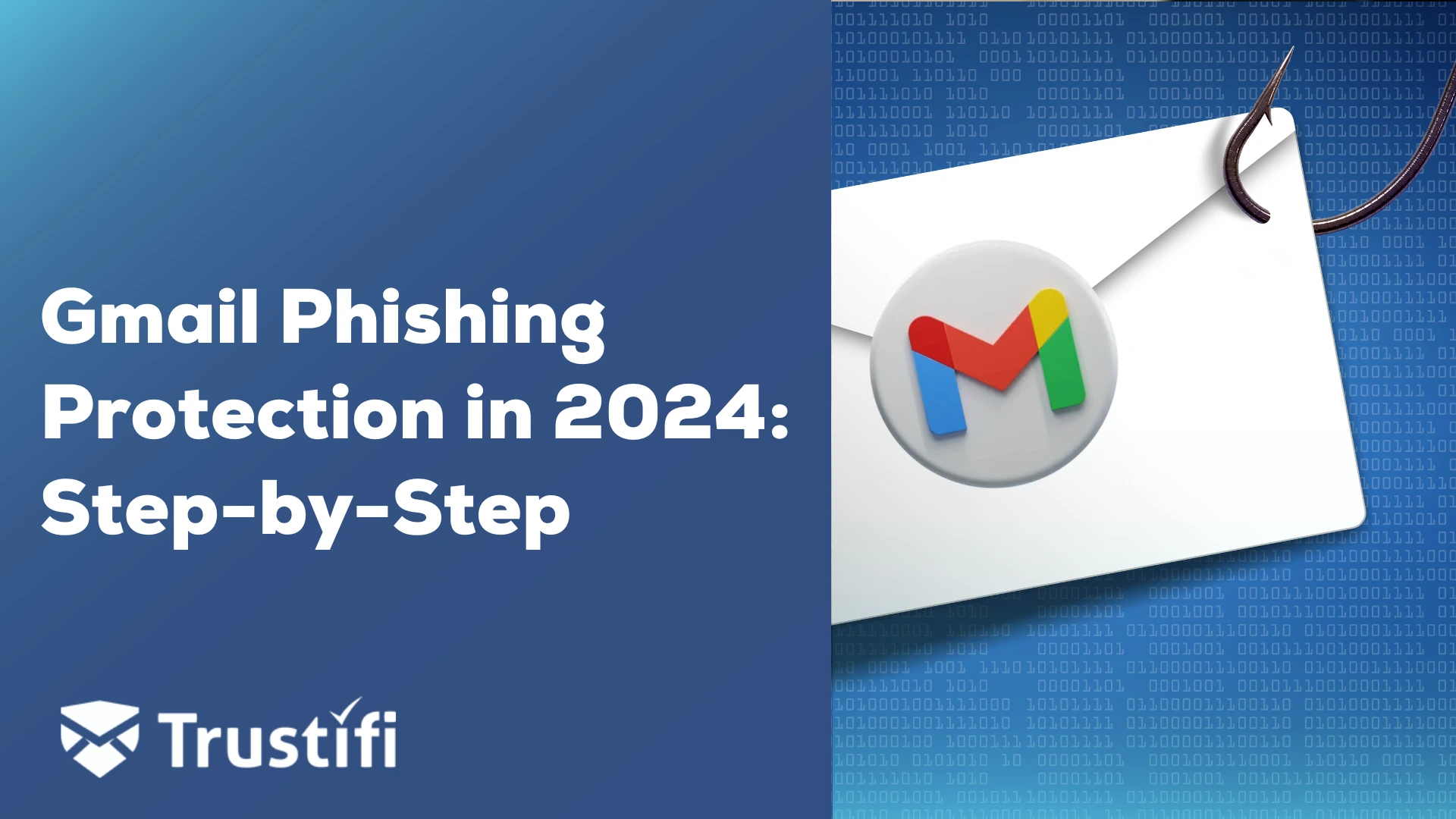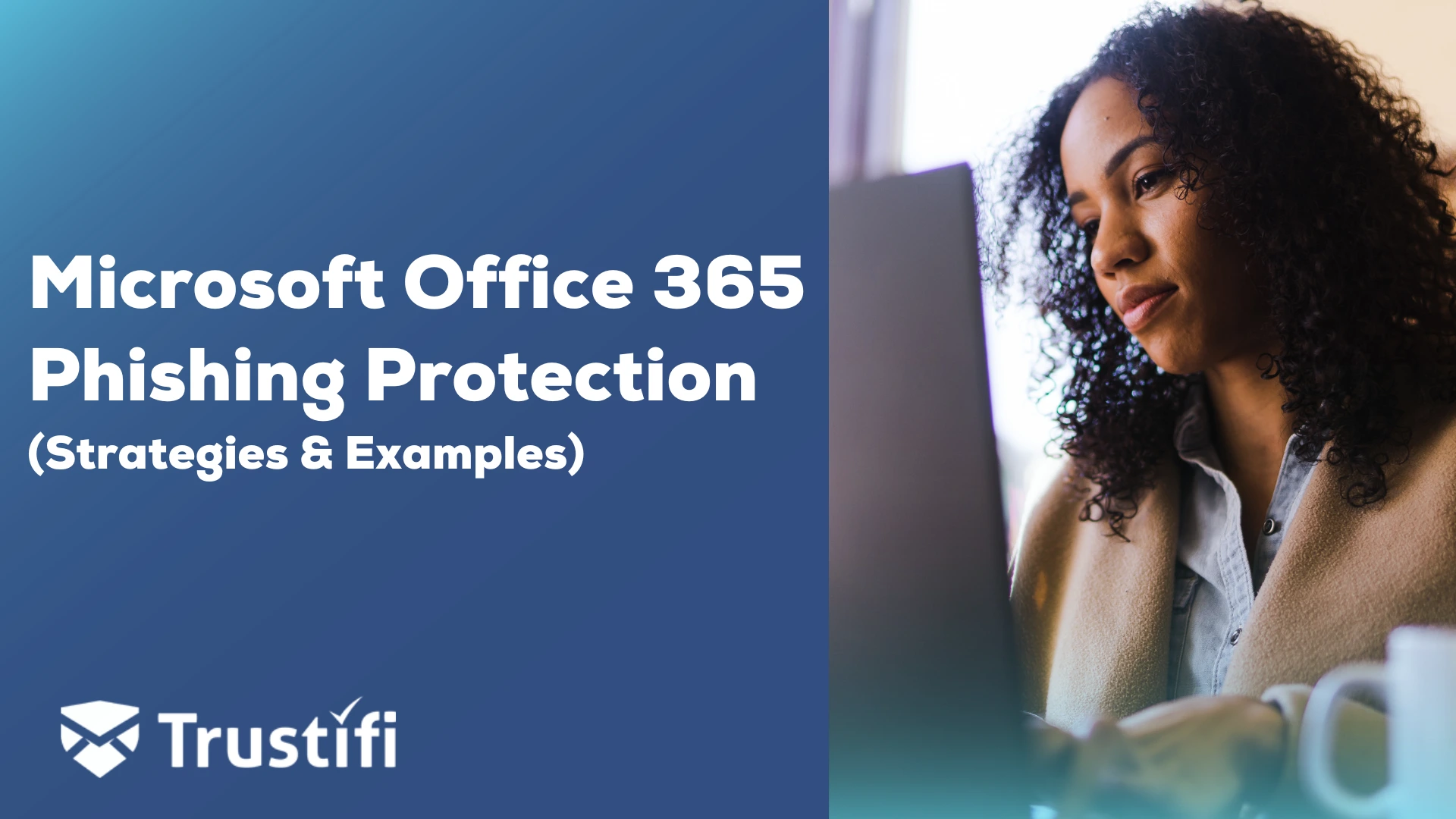Gmail phishing attacks in 2024 will continue to increase in volume and complexity. Artificial intelligence(AI) tools, including WormGPT and FraudGPT, will give hackers exceptional access to near-perfect Gmail phishing and spam emails.

Trustifi, a global leader in cloud-based advanced platforms, follows several trends in the security email landscape space, including the increase in Gmail phishing.
What is Gmail Phishing Protection, and Why is it Important?
According to the Deloitte Security Report, 91% of all security breaches originate from email phishing attacks. However, enabling basic security embedded within Gmail is a critical first step to protect against phishing attacks. Next-generation attack threads will become an increased challenge for security operations teams (SecOps) to detect and respond to.
Hackers and phishes continue to modernize their email phishing attacks because this threat vector continues to be effective in luring Gmail users and others to execute malicious instructions. These instructions include,
- Clicking on a malicious link creates a hacker site designed to capture the user credentials.
- Users click on a link that initializes a download of malware that becomes installed on the user’s device. This malware could be a rootkit to give the hacker remote access to the user’s device, or this could kick off a ransomware attack.
- Hackers also create malicious links that execute data exfiltration from the user’s device or network shares.
These results from a Gmail phishing attack cost organizations millions of dollars yearly. According to the IBM Cost of Security Report for 2023, the average of a single security breach rose to 4.45 million dollars, up 2% from the previous year.
Having global visibility through their cloud-based monitoring and reporting platform, Trustifi continues to innovate with new Gmail phishing prevention tools to assist executives in finance, InfoSec, and IT in staying one step ahead of phishes, hackers, and scammers.
How do You Protect Your Email from Phishing Step-By-Step?
Organizations seeking to develop a step-by-step strategy could follow this step-by-step guide to help prepare for 2024 Gmail phishing attacks.
- Step 1: Organizations should engage a third-party penetration (Pen) testing firm to perform a security scan, send simulated phishing to their users, and send phishing messages impersonating clients and business partners. These penetration tests help identify vulnerabilities and exploits that could damage the organization.
- Step 2: Organizations must determine if the current Gmail security protection is adequate to stop attacks identified by the Pen testers.
- Step 3: The organization should design and implement next-generation email security to include AI and ML protection gmail filtering capabilities, integrated data loss prevention, email encryption, unified monitoring and reporting, and full automation for incident response.
- Step 4: Leveraging pre-scan and post-scanning email messages together becomes an essential protection layer. Organizations could leverage Trustifi’s cloud-based email security for the pre-scan and Gmail security tools for the post-scan.
These next-generation email security protection steps complement the existing Gmail email security tools. Ultimately, the goal for the organization’s SecOps team is to avoid email phishing from reaching the inboxes.
How do You Check your Gmail Security Settings Now?
Gmail accounts are subject to several attack vectors, including data leakage from out-of-date Chrome browsers, cookie poisoning, and cache poisoning attacks. Google embedded several Chrome browser-based settings to help make Gmail more secure.
These settings are easily accessible through the Chrome browser/Settings/Security menu option.
Step 1: Select a Safe Browsing Setting within Google Chrome.
Users have the option to select enhanced, standard, or no protection. Google recommends users choose either standard or enhanced protection.

Step 2: The importance of selecting the enhanced protection.
Users choosing the enhanced protection embedded within the Chrome browser for email security will unlock several valuable security controls. Users will experience more proactive Gmail security threat protection and enhanced password protection.

Step 3: Cookie Settling.
Google empowers users to set their cookie protection level. Users can choose to block third-party cookies in incognito or block all third-party cookies.

Step 4: JavaScript settings.
Several legacy applications still have Java embedded within their code. This application language contains several security vulnerabilities within the Chrome browser. Users have the option to allow or block JavaScripts within their browser.

Step 5: Clearing Browser History, Cached Images, and Passwords.
Google added the feature with Chrome to empower users to delete browser history, cookies, and cached passwords—one of the various hacker threat vectors against users, including cache and cookie poisoning. Users accessing the clear browsing data removal function will help reduce the risk of these two attack vectors by deleting outdated cache content.

Google offers organizations and users access to several enterprise-wide and individual Gmail security protection layers. These two Gmail protection layers will provide a much-needed proactive approach to combat next-generation phishing scams in 2024.
Understand the Different Phishing Scams?
Hackers embed within Gmail phishing attacks, including spear-phishing, clone-phishing, and whaling attacks, different scams designed to prey on the weakness of human beings.
These scams steal users’ credentials, compromise their victims emotionally through false romantic interests and extortion, and coerce their victims into sending money.
Romantic Fraud
In 2022, the Federal Trade Commission (FTC) reported approximately 70,000 individuals reported incidents of romance scams, resulting in reported losses of $1.3 billion. Many of these romantic scams started with a social engineering attack first before sending phishing emails.
Credential Harvesting Impersonation Scams
Credential phishing and hacking scams originate from a Gmail phishing attack, often leading to identity theft. Hackers embed a malicious link into the message while encouraging users to click. Within the phishing message, the hacker would masquerade as a banker, lottery winner official, or an employment recruiter. They would entice the victim to click the link and change their password. The hacker would capture the keystrokes and log into the victim’s financial, corporate, and personal email accounts.
Extortion and Financial Fraud.
Many Gmail phishing messages contain threatening content or possess a sense of urgency tone to their victims. Receivers of these types of threatening emails would often panic and click on malicious links or even call the hacker, thinking the person was in their help with a problem—the financial losses from extortion and fraud against adults continue to climb each year.
According to the FBI’s 2022 Internet Crimes Report, adults aged 60 and above reported the highest financial losses in the previous year, with $3.1 billion lost to financial fraud.
The Importance of Enabling Other Valuable Security Controls.
Besides the various Gmail user and organization security protective controls, organizations consider adding additional layers that augment and complement Gmail security.
These additional controls include:
Strong Password Protocol.
Establishing when users need to change their password and what matrix to use to select a new one helps reduce credential harvesting and identity theft.
Multi-Factor Authentication.
Enabling multi-factor authentication to access your user’s Google account is essential to protecting Gmail. Combining these password and authentication strategies will also block credential theft and impersonation attacks.
Enabling Additional Layers of Email Security.
Augmenting your existing Gmail security with Trustifi’s AI-enabled inbound gmail filtering, email encryption, and data loss prevention will help stop next-generation email phishing attacks.
Why Educate Yourself on Identifying Suspicious Content?
Security awareness training is an essential protection layer, even with the most advanced email security technical solutions. Organizations investing in security awareness training witness a reduction in email phishing attacks and credential theft by leveraging email phishing attack simulation.
Preparing for the Future of Gmail Phishing Protection in 2024 and beyond.
Preparing for a future Gmail phishing attack is near impossible, partially because hackers adopt AI and ML tools. These AI-enabled hacking tools empower cyber criminals with advanced email phishing capabilities, creating near-perfect messages while increasing their attack velocity.
Enabling the various steps of protection will help organizations prepare for next-generation Gmail phishing attacks by becoming prepared.
How Can Trustifi Help With Phishing Threat Detection and Prevention?
Trustifi, a global leader in AI-advanced email security, helps many national and international organizations with its fully integrated cloud-based platform. Many organizations engage Trustifi to help merge various email security controls into one centrally managed solution.
A Customer Case Study: Peju Winery, Napa Valley, California.
Named “BEST WINERY IN North American” by the Discoverer Blog, PEJU Winery began with Tony Peju daring to sell wines in an informal facility: the garage at their vineyard estate in Rutherford, Napa Valley.
After months of deployment challenges with Mimecast’s 3rd-party vendor and countless delays with their support, email spam continued to pass through to Peju’s employees.
Why Trustifi?
“Trustifi is unmatched in the email security space. Simple to deploy, fast onboarding and user adoption, and at an exceptional price point to meet organizations challenged with budget restraints.”



